social software
description: software that facilitates social interactions, communications, and collaborations among users
47 results

Designing for the Social Web
by
Joshua Porter
Published 18 May 2008
Yale University Press, 2006. 5 6 DESIGNING FOR THE SOCIAL WEB We’ve barely seen the tip of the iceberg when it comes to designing social software. I’m confident we’ll be discussing social software (and how to design it) for decades to come. It is the future of the web. Here are several reasons why: 1. Humans are innately social. Since humans are social, it makes sense that our software will be social, too. 2. Social software is a forced move. The sheer amount of information and choice we’re faced with forces us toward authentic conversations (and tools to help us find and have them). 3. Social software is accelerating. Social software is trending upward: it is already the fastest growing and most widely used software on the web.
…
Designing an interface that evokes the desired behavior is a huge challenge. If the interface is too confining, people won’t use it. If the interface is too flexible, people won’t know how to use it. In the middle, the sweet spot, interface designers can create powerful social software that supports the person and their personality, as well as the social environment and the groups they are a part of. The Challenge of Social Software Thus the challenge of social software is to design interfaces that support the current and desired social behavior of the people who use them. Designing an effective interface has always been tough, even when we were merely designing interfaces for one person to interact with content we controlled.
…
All of these social technologies predate the World Wide Web, which was invented by Sir Tim Berners-Lee in 1989.11 The web is incomparable. Now, nearly two decades after its invention, the world has completely and permanently changed. It’s hard to imagine what life must have been like before we had web sites and applications. Starting with the social software precursors mentioned above, the web has evolved toward more mature social software. What follows is a very abridged history of the web from a social software point of 9 For more insight into the reasons why people use MySpace, read Danah Boyd’s: Identity Production in a Networked Culture: Why Youth Heart MySpace http://www.danah.org/papers/AAAS2006.html 10 http://en.wikipedia.org/wiki/Email 11 Super cool link: Tim Berners-Lee announcing the World Wide Web on Usenet: http://groups.google. com/group/alt.hypertext/msg/395f282a67a1916c 13 14 DESIGNING FOR THE SOCIAL WEB view.
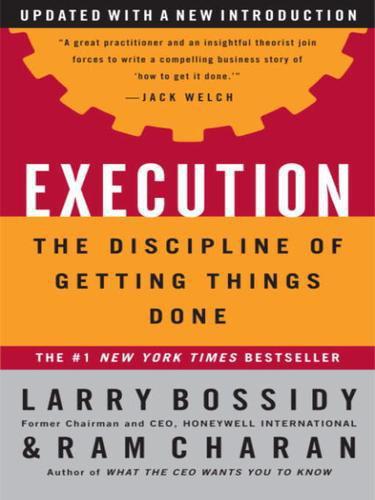
Execution: The Discipline of Getting Things Done
by
Larry Bossidy
Published 10 Nov 2009
They don’t teach people to break a major concept down into smaller critical tasks that can be executed in the short term, which is difficult for some people. They don’t conduct the dialogues that surface realities, teach people how to think, or bring issues to closure. The missing part of the equation lies in what we call the social software of execution. THE SOCIAL SOFTWARE OF EXECUTION RAM: How many meetings have you attended where everyone seemed to agree at the end about what actions would be taken but nothing much actually happened as a result? These are the meetings where there’s no robust debate and therefore nobody states their misgivings.
…
The inability to act decisively—which translates into an inability to execute—is rooted in the corporate culture and seems to employees to be impervious to change. The key word here is “seems,” because, in fact, leaders create a culture of indecisiveness, and leaders can break it. The primary instrument at their disposal is the social software of the organization. Like a computer, a corporation has both hardware and software. We call the software of the corporation “social software” because any organization of two or more human beings is a social system. The hardware includes such things as organizational structure, design of rewards, compensation and sanctions, design of financial reports and their flow.
…
In part 1, chapters 1 and 2, we explain the discipline of execution, why it is so important today, and how it can differentiate you from your competitors. Part 2, chapters 3 to 5, shows that execution doesn’t just happen. Fundamental building blocks need to be in place, and we identify and describe the most important: the leader’s personal priorities, the social software of culture change, and the leader’s most important job—selecting and appraising people. Part 3 is the how-to section of the book. Chapters 6 to 9 discuss the three core processes of people, strategy, and operations. We show what makes them effective, and how the practice of each process is linked to and integrated with the other two.

More Joel on Software
by
Joel Spolsky
Published 25 Jun 2008
The great thing about eBay is that it was a huge success precisely because it seemed like a terrible idea at the time, and so nobody else tried it, until eBay locked in the network effects and first-mover advantage. In addition to absolute success and failures in social software, there are also social software side effects. The way social software behaves determines a huge amount about the type of community that develops. Usenet clients have this big-R command, which is used to reply to a message while quoting the original message with those elegant >’s in the left It’s Not Just Usability 107 column.
…
Even though human beings had been debating for centuries, a tiny feature of a software product produced a whole new style of debating. Small changes in software can make big differences in the way that software supports, or fails to support, its social goals. Danah Boyd has a great critique of social software networks, “Autistic Social Software” (www.danah.org/papers/Supernova2004.html), blasting the current generation of this software for forcing people to behave autistically: Consider, for a moment, the recent surge of interest in articulated social networks such as Friendster, Tribe, LinkedIn, Orkut, and the like.
…
When software implements social interfaces while disregarding cultural anthropology, it’s creepy and awkward and doesn’t really work. 108 More from Joel on Software Designing social software L et me give you an example of social interface design. Suppose your user does something they shouldn’t have done. Good usability design says that you should tell them what they did wrong and tell them how to correct it. Usability consultants are marketing this under the brand name “Defensive Design.” When you’re working on social software, this is too naive. Maybe the thing that they did wrong was to post an advertisement for Viagra on a discussion group. Now you tell them, “Sorry, Viagra is not a suitable topic.

The Wealth of Networks: How Social Production Transforms Markets and Freedom
by
Yochai Benkler
Published 14 May 2006
Again, the needs of the group as a group often differ from those of the individual participant. Thinking of the platform as social software entails designing it with characteristics [pg 374] that have a certain social-science or psychological model of the interactions of a group, and building the platform's affordances in order to enhance the survivability and efficacy of the group, even if it sometimes comes at the expense of the individual user's ease of use or comfort. 662 This emergence of social software--like blogs with opportunities to comment, Wikis, as well as social-norm-mediated Listservs or uses of the "cc" line in e-mail--underscores the nondeterministic nature of the claim about the relationship between the Internet and social relations.
…
Using Networked Communication to Work Around Authoritarian Control Toward a Networked Public Sphere Chapter 8 - Cultural Freedom: A Culture Both Plastic and Critical Cultural Freedom in Liberal Political Theory The Transparency of Internet Culture The Plasticity of Internet Culture: the Future of High-Production-Value Folk Culture A Participatory Culture: Toward Policy Chapter 9 - Justice and Development Liberal Theories of Justice and the Networked Information Economy Commons-Based Strategies for Human Welfare and Development Information-Embedded Goods and Tools, Information, and Knowledge Industrial Organization of Hdi-Related Information Industries Toward Adopting Commons-Based Strategies for Development Software Scientific Publication Commons-Based Research for Food and Medicines Food Security: Commons-Based Agricultural Innovation Access to Medicines: Commons-Based Strategies for Biomedical Research Commons-Based Strategies for Development: Conclusion Chapter 10 - Social Ties: Networking Together From "Virtual Communities" to Fear of Disintegration A More Positive Picture Emerges over Time Users Increase Their Connections with Preexisting Relations Networked Individuals The Internet As a Platform for Human Connection The Emergence of Social Software The Internet and Human Community Part Three - Policies of Freedom at a Moment of Transformation Introduction Chapter 11 - The Battle Over the Institutional Ecology of the Digital Environment Institutional Ecology and Path Dependence A Framework for Mapping the Institutional Ecology The Physical Layer Transport: Wires and Wireless Devices The Logical Layer The Digital Millennium Copyright Act of 1998 The Battle over Peer-to-Peer Networks The Domain Name System: From Public Trust to the Fetishism of Mnemonics The Browser Wars Free Software Software Patents The Content Layer Copyright Contractual Enclosure: Click-Wrap Licenses and the Uniform Computer Information Transactions Act (UCITA) Trademark Dilution Database Protection Linking and Trespass to Chattels: New Forms of Information Exclusivity International "Harmonization" Countervailing Forces The Problem of Security Chapter 12 - Conclusion: The Stakes of Information Law and Policy Blurb Endnotes Index Copyright © 2006 Yochai Benkler.
…
Instead, it allows one, or a few, or even a limited large group to communicate to a large but limited group, where the limit is self-selection as being interested or even immersed in a subject. 388 The World Wide Web is the other major platform for tools that individuals use to communicate in the networked public sphere. It enables a wide range of applications, from basic static Web pages, to, more recently, blogs and various social-software-mediated platforms for large-scale conversations of the type described in chapter 3--like Slashdot. Static Web pages are the individual's basic "broadcast" medium. They allow any individual or organization to present basic texts, sounds, and images pertaining to their position. They allow small NGOs to have a worldwide presence and visibility.

Smart Cities: Big Data, Civic Hackers, and the Quest for a New Utopia
by
Anthony M. Townsend
Published 29 Sep 2013
The first signs of a similar backlash to corporate visions of smart cities are now coming to light, as a radically different vision of how we might design and build them bubbles up from the street. Unlike the mainframes of IBM’s heyday, computing is no longer solely in the hands of big companies and governments. The raw material and the means of producing the smart city—smartphones, social software, open-source hardware, and cheap bandwidth—are widely democratized and inexpensive. Combining and recombining them in endless variations is cheap, easy, and fun. All over the world, a motley assortment of activists, entrepreneurs, and civic hackers are tinkering their ways toward a different kind of utopia.
…
A block north, the ghost of punk godfather Joey Ramone still haunts the tenth-floor apartment where he lived out the last days of his life. In the building that once housed the Electric Circus, the nightclub where the Velvet Underground held court in the late 1960s, now resides a chain Mexican joint. In 2003, across the street in the men’s room of the St. Mark’s Ale House, I had my first encounter with mobile social software. The wall space above urinals is essential meme circulation infrastructure for Manhattan’s downtown set. With a captive audience, promoters pile sticker upon sticker, which accumulate in a kind of postmodern sediment. On the underside of the toilet, a placement even more clever and impossible to ignore, a sticker reads “dodgeball.com . . . when NYC is your playground . . . now available on the wireless web!”
…
Conversely, the service helped pave the way for the app market by showing the wireless industry the huge demand for new software on mobiles. For nascent social networks, it highlighted how important and tricky location would be, but also proposed some creative solutions to the problems that cropped up, including the dreaded “ex-girlfriend problem” (which should be self-explanatory). Dodgeball showed how social software could be with us everywhere, and be fun without being annoying. Crowley himself is an archetype for smart-city hackers everywhere. Urban economists believe that cities thrive because they create opportunities for people to interact for commerce, learning, and entertainment. But it takes someone who intuitively understands cities to create a new way of doing that for the whole world to use.
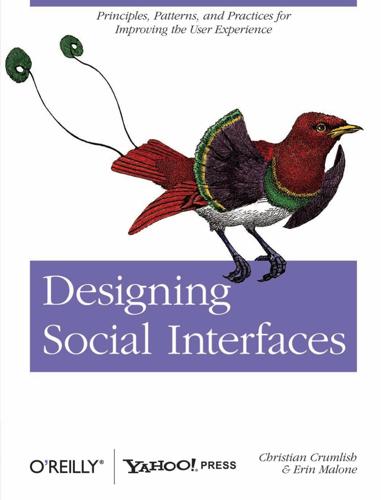
Designing Social Interfaces
by
Christian Crumlish
and
Erin Malone
Published 30 Sep 2009
Scott, Sage Publications Ltd., 2000 The Strength of Weak Ties: A Network Theory Revisited, by Mark Granovetter, State University of New York, Stony Brook, 1983, http://www.si.umich.edu/~rfrost/courses/ SI110/readings/In_Out_and_Beyond/Granovetter.pdf “You are who you know,” by Andrew Leonard, Salon, June 15, 2004, http://dir.salon.com/ story/tech/feature/2004/06/15/social_software_one/index.html “You are who you know: Part 2,” by Andrew Leonard, Salon, June 16, 2004, http://dir. salon.com/story/tech/feature/2004/06/16/social_software_two/index.html Download at WoweBook.Com Download at WoweBook.Com Chapter 15 Good Cop, Bad Cop In the past I engaged in the whack-a-mole game against abusers. I spent many man months on algorithmic approaches for fighting abuse.
…
Without that experience I would not have felt qualified to write this book. To Christina, extra thanks for giving me advice and the foreknowledge that the book would take over my life for a while. Special thanks to Matt Leacock, for helping me realize the Yahoo! Pattern Library into being and for keeping community applications and social software a constant in our team across six and a half years at AOL and Yahoo!. Thanks to Lucas Pettinati, for the amazing work designing and testing Yahoo!’s registration process and forms, and for defining a set of best practices around this work. Thanks to Bill Scott for pushing through the vision of an open pattern library from Yahoo!
…
Another image in the group then prompts this further invitation that appears to facetiously parody the whole “Hi, I’m an administrator for a group called…” social interaction. Palimpsest In a talk that Matt “blackbeltjones” Jones gave at Adaptive Path’s MX week in 2008, he recommended the metaphor of the palimpsest (http://www.slideshare.net/blackbeltjones/ battle-for-the-planet-of-the-apes-a-perspective-on-social-software-and-social-networks/56) as a “model for social tools,” while speaking of Dopplr, a social network for frequent travelers: Our content itself gets smarter as it aggregates our thoughts about it…. I think the palimpsest as a model for social tools is a powerful one. Of course they originated from the scarcity of media, something we don’t exactly suffer [from].

Here Comes Everybody: The Power of Organizing Without Organizations
by
Clay Shirky
Published 28 Feb 2008
Page 222: Howard Dean’s presidential campaign The Howard Dean campaign in 2003-2004 was the high-water mark of the use of the internet in national politics, and a number of us were watching it closely (and generally enthusiastically) during that time. Dean’s actual performance, once he faced real voters, was so catastrophic that understanding what had happened became a critical task. I wrote two essays on the electoral implosion of the Dean campaign in early 2004: “Is Social Software Bad for the Dean Campaign?” (many.corante.com/archives/2004/01/26/is_social_software_bad_for_the_dean_campaign.php ) and “Exiting Deanspace,” a reference to a social tool used by the campaign (many.corante.com/archives/2004/02/03/exiting_deanspace.php ). Page 224: bonding and bridging social capital Robert D. Putnam followed up his 2000 book Bowling Alone with Better Together: Restoring the American Community, which he cowrote with Lewis Feldstein and Donald J.
…
—Kansas City Star “Shirky . . . has a novel response to the question of quality control: we will have to move to a publish-then-filter model, the opposite of today’s ‘gatekeeper’ structure.” —Columbia Journalism Review “I don’t think you’ll find a smarter, more articulate writer on the topic of internet community than Clay Shirky. . . . If you’re developing social software of any kind, this book should be required reading.” —D: All Things Digital “Meat and potatoes anecdotes about communication tools.” —statesman.com “Seriously, Clay Shirky’s new book is really good. (For once, no irony or snark: it’s just very well done.) Each time someone as insightful as Clay Shirky starts writing for the Web, the internet will get 1 percent better.
…
All the technologies we see in the story of Ivanna’s phone, the phones and computers, the e-mail and instant messages, and the webpages, are manifestations of a more fundamental shift. We now have communications tools that are flexible enough to match our social capabilities, and we are witnessing the rise of new ways of coordinating action that take advantage of that change. These communications tools have been given many names, all variations on a theme: “social software,” “social media,” “social computing,” and so on. Though there are some distinctions between these labels, the core idea is the same: we are living in the middle of a remarkable increase in our ability to share, to cooperate with one another, and to take collective action, all outside the framework of traditional institutions and organizations.
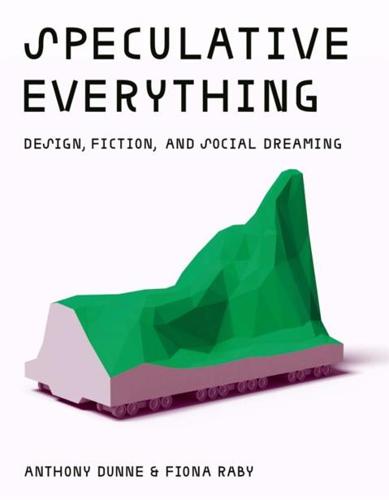
Speculative Everything: Design, Fiction, and Social Dreaming
by
Anthony Dunne
and
Fiona Raby
Published 22 Nov 2013
The work of highly conceptual studios such as Abake, Metahaven, and Daniel Eatcock is regularly discussed, exhibited, and debated in the design press. In Facestate (2011) Metahaven use the kind of strategic thinking usually applied to commercial corporate identity projects to critique the political implications of blurring boundaries between consumerism and citizenship, especially when social software is embraced by governments in the name of improved transparency and interaction. Metahaven, Facestate, 2011. Photograph by Gene Pittman. Photograph courtesy of Walker Art Center. In fashion it ranges from one-off haute couture pieces for the catwalk to mass-produced diffusion lines for sale in high street shops.
…
The design collective Metahaven has developed a sustained critique of neoliberalism through a series of uncorporate identities for imaginary corporategovernment states by subverting branding and corporate identity strategies from a graphic design perspective.18 Their Facestate (2011) installation for Graphic Design: Now in Production at the Walker Art Center explored parallels between social software and the state: "It is about politicians hailing the entrepreneurship of Mark Zuckerberg, about the neoliberal dream of minimal government interference, about the governance of social networks, about face recognition, about debt, about the future of money and currency in social networks, and about the dream of total participation. "19 Metahaven combines extensive research with the setting out of fictional corporate government hybrids through design.
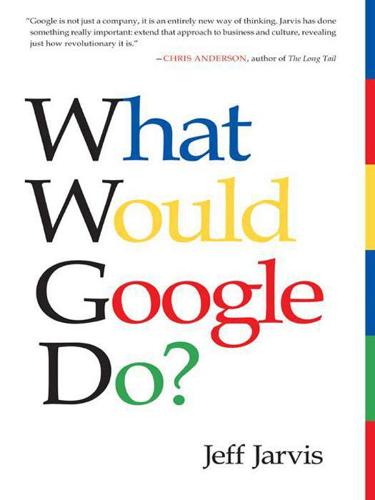
What Would Google Do?
by
Jeff Jarvis
Published 15 Feb 2009
I learn differently, discuss differently, see differently, think differently. Thinking differently is the key product and skill of the Google age. It has been said that young people today may take on new behavioral norms and mores and political outlooks from games and social software—and I don’t mean sex and violence, but subtler worldviews. “Social software is political science in executable form,” NYU professor Clay Shirky said in one essay. “Social norms in game worlds have the effect of governance,” he said in another. Stanford law professor Lawrence Lessig famously declared that code is law: “This code, or architecture, sets the terms on which life in cyberspace is experienced.
…
Note that to make the gift economy work, a project doesn’t need its entire community to contribute. Only about 1 percent of those who use Wikipedia create Wikipedia—that is Wikipedia’s 1 percent rule. Indeed, if that were doubled, it probably would create chaos. In Here Comes Everybody, NYU professor Clay Shirky, who studies social software, calculated the output of the authors of one article: “[O]f the 129 contributors on the subject of asphalt, a hundred of them contributed only one edit each, while the half-dozen most active editors contributed nearly fifty edits among them, almost a quarter of the total.” The most active contributor was 10 times more active than the least active.

Data for the Public Good
by
Alex Howard
Published 21 Feb 2012
His work there focused on how regulations affect IT operations, including issues of data protection, privacy, security and enterprise IT strategy. Before moving the focus of his coverage to cybersecurity, online privacy and compliance, Howard was the associate editor of WhatIs.com, an online IT encyclopedia. In that role, he researched and wrote about nearly every aspect of enterprise IT, including the impact of social software on business and the media. In his spare time, he practiced writing about himself in the third person, with mixed results. Howard’s work experience also includes working in operations for an e-business consultancy, as a knowledge broker for a management consulting firm, as a middle school teacher, as a master home builder and, very briefly, as a garden manager at an outstanding Italian restaurant.
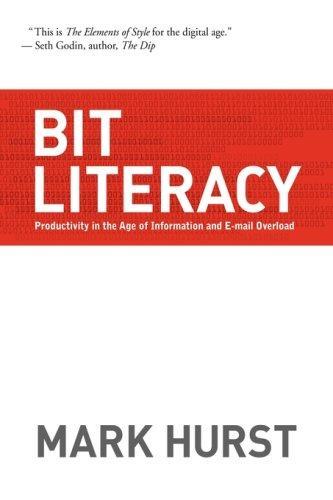
Bit Literacy: Productivity in the Age of Information and E-mail Overload
by
Mark Hurst
Published 15 Jun 2007
Most users would prefer to eliminate the frustrations and complexity of technology, even with a loss in privacy. Bit overload, not privacy, will be their primary concern. As bits increase, new kinds of tools will become more important. Information visualization software will promise to display large data sets for easy scanning, and “social software” like blogs and wikis will offer users new ways to collaborate online. A few instances of these tools will succeed, but many more will fail.51 Ultimately, though, tools will play only a supporting role. The pertinent question is whether individual users will commit to learning and practicing bit literacy.
…
(“Breaking the Myth of Megapixels,” the New York Times, February 8, 2007.) 49 “The phone of the future,” The Economist, December 2, 2006. 50 One organization that fights corporate abuse of copyright law is the EFF, or Electronic Frontier Foundation, at eff.org. 51 In the December 3, 2006 New York Times Magazine article “Open Source Spying,” by Clive Thompson, NYU professor Clay Shirky put it best: “The normal case for social software is failure.” 52 The “paperless office” may also be within reach, at last, for some companies. As employees become more effective with bits, they will have less need to print out e-mails, documents, and other files. Paper will always be useful in some situations, but bit-literate users will avoid it when possible. 53 “Open Source Spying,” by Clive Thompson, the New York Times Magazine, December 3, 2006. 54 Popup text from Microsoft Word 2004 for Mac, version 11.0. 55 The SANS Internet Storm Center monitors the average "survival time" of a Windows PC at http://isc.sans.org/survivaltime.html. 56 The name was coined by Helen Moriarty, mother of my business partner Phil Terry, back in 1999. 57 Here's most of what we add: QuicKeys for one-touch access to applications and the team contacts file; Default Folder for one-touch folder access; Typinator or TypeIt4Me as the bit lever; TextWrangler as the text editor; AppleWorks as the word processor and wireframing tool; FileMaker for databases; Now Up-to-Date for the calendar; Firefox or Safari as the Web browser; a Gootodo.com account for the todo list; Mailsmith for the e-mail program; Microsoft Office for compatibility to client files; and for really dedicated learners, the Dvorak keymap for the keyboard.

The Secret War Between Downloading and Uploading: Tales of the Computer as Culture Machine
by
Peter Lunenfeld
Published 31 Mar 2011
[to] be busy, to be connected, to be alive, to be recognized, and to matter.”25 Recent developments in the Web coupled with the broadening of social networking encourage us to invert Stone’s coinage and move from attention to production. The growth of Web logs, or blogs, considered in tandem with Flickr, Digg, and other social softwares that enable posting and tagging accounts, creates an environment that I categorize as 34 STICK Y “continuous partial production.” As 99 percent of everything ever made is either purely for personal consumption, largely forgettable, or just plain junk, continuous partial production is not a huge problem.
…
Accounting for Web n.0 as an ever-escalating series of developments and redevelopments, this chapter offers a series of linked impact reports on the culture machine’s electronic environments. Taxonomics No matter the name, systems theorists have characterized the emergent Web as displaying robust architectures of participation, having evolved into a truly social software, with a myriad of new ways to link people together. The characteristic usage of the Web in the 1990s was surfing from one static Web page to another. The contemporary Web offers a more dynamic experience in which the users themselves contribute to the environment. Wikis, blogs, and networking sites create affordances for an ever-expanding number of people to share their experiences, perceptions, and productions.
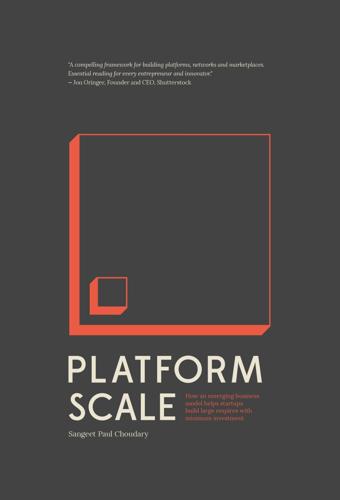
Platform Scale: How an Emerging Business Model Helps Startups Build Large Empires With Minimum Investment
by
Sangeet Paul Choudary
Published 14 Sep 2015
Machines embedded with sensors constantly stream activity data into a platform that helps each machine learn from other machines and provides network-wide intelligence. These machines benefit from implicit network effects, and every machine learns from the community of machines it is connected to. • Enterprise 2.0. Andrew McAfee highlights the rise of social software in the enterprise and how it’s replacing traditional enterprise systems. Enterprise-wide social software needs an underlying data platform to aggregate the many workflows and knowledge exchanges within an organization. The streaming and aggregation of data from multiple input points and the subsequent provision of services to multiple stakeholders is an outcome of a central data platform

The Wikipedia Revolution: How a Bunch of Nobodies Created the World's Greatest Encyclopedia
by
Andrew Lih
Published 5 Jul 2010
Within Wikipedia’s community, we’re actually talking about very old-fashioned types of references. Good writing. Neutrality. Reliable sources. Verifiability. We’re talking about people’s behavior in the community. We’re not talking about some kind of magic process. Quality matters, and a thoughtful community has emerged around that ideal. I have a philosophy about the design of social software. Imagine that you’re going to design a restaurant. Just think about the problem of design for a restaurant. In this restaurant we’re going to be serving steak. Since we’re going to be serving steak, we’re going to have steak knives. And since we’re going to have steak knives, people might stab each other.
…
And since we’re going to have steak knives, people might stab each other. So how do we solve this problem? What we could do is build cages and keep everybody in cages to make sure no one stabs anyone. Well, this makes for a bad society. We reject this kind of thinking in restaurant design, and yet this is the predominant paradigm for social software design. Traditionally when we sit down to design a Web site, we think of all of the bad things people might do, and make sure that we have controls and permissions, everything to prevent people from doing the bad things. This has two effects. While you do prevent people from doing bad things, there are often very obvious and direct side effects that prevent them from doing good things.

The Caryatids
by
Bruce Sterling
Published 24 Feb 2009
Men felt dishonored, deprived of all sense and meaning, when culture collapsed. Refugee men trapped in camp thought in bitter terms of escape and vengeance. “Fight or flight.” Women in a camp would search for female allies, for any means and methods to manage the day. “Tend and befriend.” So: In a proper modern camp like this one, the social software was designed to exploit those realities. First, the women had to be protected from desperate male violence until a community emerged. The women were grouped and trained with hand tools. The second wave of camp acculturation was designed for the men. It involved danger, difficulty, raw challenge, respect, and honor, in a bitter competition over power tools.
…
Now, sitting years later in the sagging deck chair in an old boat with the island sinking into darkness, Vera knew that no single person had ever done that. Mljet was a web of emerging technologies, around which people accreted. Nothing much had been “invented” on Mljet. The brain scanners, the attention tracking, the neural software, the social software inside the camps, the sensors, the everyware, the communal property, even the heavy-duty exoskeletons—they all had years of development behind them, somewhere else. The one innovation was the way they’d been brought to life by people willing to believe in them, wanting to believe in them. Herbert had always claimed that she, Vera, had “inspired” his efforts.
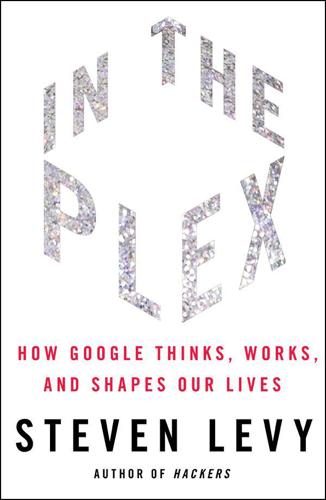
In the Plex: How Google Thinks, Works, and Shapes Our Lives
by
Steven Levy
Published 12 Apr 2011
The owners of paradise.com and utopia.com were similarly unaccommodating. Finally, the product manager and Mayer thought of naming it after its creator. “Orkut.com” belonged to Buyukkokten himself. Google convinced him, and its social networking service was called Orkut. Was it a sign of the company’s distrust of the insufficiently algorithmic nature of social software that the product was not branded with the Google name? “We wanted to see if it could stand on its own two feet,” says Mayer, a stricture not required from such Google services as Gmail and Google Maps. In fact, Orkut almost immediately stood tall. Even though the software was available only by invitation—the first users were Googlers who invited their own friends—hundreds of thousands of people signed up in the first month alone.
…
Skimming twenty engineers each from a separate team meant that you would be losing an average of 15 percent of the manpower in those teams. As it was, twenty people had to be temporarily recruited that August to fix Orkut’s lingering problems. “I do think we made the right trade-off and the right balance,” Mayer would later argue. Considering how important social software would become, it was hard to agree. Orkut was far from the only opportunity in the social sphere that Google missed. In May 2005, Google bought a small company in the promising area known as mobile social. Founded by Dennis Crowley and Alex Rainert, Dodgeball was a pioneering service that let mobile phone users turn their city into a giant hide-and-seek game where they could discover (or avoid) nearby friends.
…
In Silicon Valley, people assumed that delays in Google’s “Facebook killer” hinted at another failed effort in social networking, a harbinger perhaps of a fall from primacy for Google itself. Still, Gundotra and Horowitz were energized by what they felt were significant innovations in the initiative, and believed that Emerald Sea would finally establish itself as a primary player in the crucial area of social software. “This is the next generation of Google—it’s Google plus one,” said Gundotra. In its forays into other areas, like phones, videos, maps, applications, and operating systems, Google had not acted in response to competition. If it had a good idea, it simply pursued it, no matter who was occupying the space.
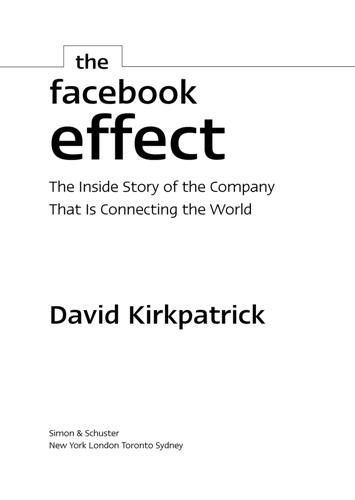
The Facebook Effect
by
David Kirkpatrick
Published 19 Nov 2010
During the first months of Harvard’s fall 2003 semester, Zuckerberg began making waves with ad hoc bad-boy applications that were intrinsically social—first Course Match, then Facemash. Narendra and the Winkelvosses read about him in the Crimson’s coverage of the Facemash episode. They got in touch and arranged a meeting. He agreed to help out, but says now he thought of it as just another of his many social software “projects.” Zuckerberg worked off and on writing code for Harvard Connection. After a few weeks he appears to have lost interest, though he apparently didn’t make that clear to the Winkelvosses and Narendra. They began to complain that he was taking too long. At one point Zuckerberg apologized for a delay, explaining he had forgotten to bring the charger for his laptop home with him for the Thanksgiving holidays.
…
During the time he was working for Harvard Connection, Zuckerberg may have become uneasy about the fact that he was already working on his own social network. He certainly should have alerted the Winkelvoss brothers and Narendra earlier about what to expect. He was rude. He became very uncooperative. But long before he met the Winkelvosses and Divya Narendra he already was thinking about what kind of social software was possible on the Internet. That’s why the Harvard Connection project interested him in the first place. The civil lawsuit filed on behalf of the three alleges behavior considerably worse than rudeness: “copyright infringement, breach of actual or implied contract, misappropriation of trade secrets, breach of fiduciary duty, unjust enrichment, unfair business practices, intentional interference with prospective business advantage, breach of duty of good faith and fair dealing, fraud, and breach of confidence.”
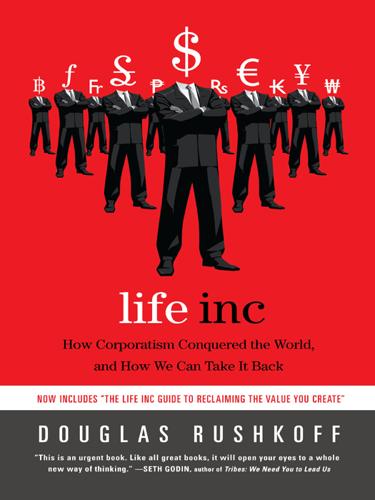
Life Inc.: How the World Became a Corporation and How to Take It Back
by
Douglas Rushkoff
Published 1 Jun 2009
Rather, it is corporatism itself: a logic we have internalized into our very being, a lens through which we view the world around us, and an ethos with which we justify our behaviors. Making matters worse, we accept its dominance over us as preexisting—as a given circumstance of the human condition. It just is. But it isn’t. Corporatism didn’t evolve naturally. The landscape on which we are living—the operating system on which we are now running our social software—was invented by people, sold to us as a better way of life, supported by myths, and ultimately allowed to develop into a self-sustaining reality. It is a map that has replaced the territory. Its basic laws were set in motion as far back as the Renaissance; it was accelerated by the Industrial Age; and it was sold to us as a better way of life by a determined generation of corporate leaders who believed they had our best interests at heart and who ultimately succeeded in their dream of controlling the masses from above.
…
Different currencies incentivize different behaviors and, hence, yield different economies. Information Age economies will replace commercial markets with more efficient, high-trust, self-organizing social networks that immediately channel appropriate resources where they are needed. Just as factories and finance were high-leverage tools of the Industrial Age, social software and reputation currencies that fuel these new social markets are the tools of the new economy. And yes, these markets move real value. It is already happening with software (open source), accommodations (couchsurfing), knowledge (MIT open courseware), and many domains. There is a family of projects fostering these new economies and wielding currencies as something more powerful than money.

Collaborative Society
by
Dariusz Jemielniak
and
Aleksandra Przegalinska
Published 18 Feb 2020
Madden, Teens, Privacy & Online Social Networks: How Teens Manage Their Online Identities and Personal Information in the Age of MySpace (Pew Internet & American Life Project, 2007). 7. D. Boyd, “Can Social Network Sites Enable Political Action?” International Journal of Media & Cultural Politics 4 (2008): 241–244. 8. J. G. Breslin, A. Passant, and S. Decker, “Introduction to the Social Web (Web 2.0, Social Media, Social Software),” in The Social Semantic Web, ed. J. G. Breslin, A. Passant, S. and Decker, (Springer Berlin Heidelberg, 2009), 21–44. 9. E. Zuckerman, “Cute Cats to the Rescue” (chapter 6), in From Voice to Influence: Understanding Citizenship in a Digital Age, ed. D. Allen and J. S. Light (University of Chicago Press, 2015). 10.

Coders: The Making of a New Tribe and the Remaking of the World
by
Clive Thompson
Published 26 Mar 2019
(Krieger and Systrom left Instagram in September 2018, citing a desire to explore new ideas; Everingham moved that spring to a division of Facebook that develops blockchain technology.) Neither Krieger nor Systrom actively set out to erode anyone’s self-esteem, of course. They loved photography, dug code, and aimed to unlock the latent energy of a world where everyone’s already carrying a camera 24/7. But social software has impacts that the inventors, who are usually focused on the short-term goal of simply getting their new prototypes to work (and then scale), often fail to predict. And frankly, the money was deforming decisions—what code gets written and why. By the time Instagram exploded, the finances of big start-ups were pretty well known.
…
Understanding the huge ethical dangers that come with pell-mell growth isn’t second nature for techies, he notes: “None of that is obvious, and they don’t teach any of that in computer science programs.” Granted, Dash’s advice isn’t easy for start-ups to follow. Many need investment to get off the ground. If that culture is going to shift away from promoting manic growth, it’ll likely happen slowly. And the final plank of reforming today’s social software would be weaning it off advertising. As the ex-Googler James Williams notes, advertising that seeks to monetize attention is what makes coders and designers become “adversarial” to their user. In contrast, software that doesn’t rely on ads can focus on serving precisely what its users want. Wikipedia’s management, for example, has historically decided to raise money directly from users instead of running ads.
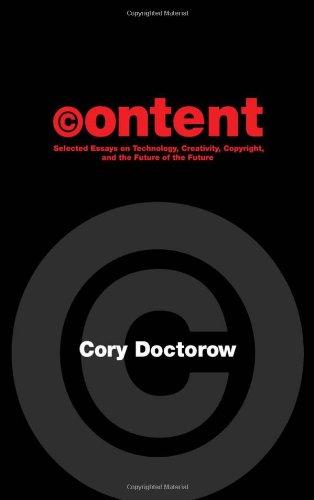
Content: Selected Essays on Technology, Creativity, Copyright, and the Future of the Future
by
Cory Doctorow
Published 15 Sep 2008
Having watched the rise and fall of SixDegrees, Friendster, and the many other proto-hominids that make up the evolutionary chain leading to Facebook, MySpace, et al, I'm inclined to think that these systems are subject to a Brook's-law parallel: "Adding more users to a social network increases the probability that it will put you in an awkward social circumstance." Perhaps we can call this "boyd's Law" [NOTE TO EDITOR: "boyd" is always lower-case] for danah [TO EDITOR: "danah" too!] boyd, the social scientist who has studied many of these networks from the inside as a keen-eyed net-anthropologist and who has described the many ways in which social software does violence to sociability in a series of sharp papers. Here's one of boyd's examples, a true story: a young woman, an elementary school teacher, joins Friendster after some of her Burning Man buddies send her an invite. All is well until her students sign up and notice that all the friends in her profile are sunburnt, drug-addled techno-pagans whose own profiles are adorned with digital photos of their painted genitals flapping over the Playa.

The Thank You Economy
by
Gary Vaynerchuk
Published 1 Jan 2010
It Takes Just One Customer If Irena Vaksman had not established herself on all of those social media sites, Loïc Le Meur probably would never have mentioned her unless someone he knew asked him to recommend a dentist. But Loïc Le Meur is very interested in social media—he is an internationally known entrepreneur, the developer of the social software app Seesmic, and was ranked by BusinessWeek as one of 2008’s twenty-five most influential people on the Web. So when Le Meur found out that his new dentist had a social media presence, he thought that was worth writing about, and he posted some thoughts about it on his blog. Like most of Dr. Vaksman’s other patients, he was complimentary and pleased with the thorough care he received and with the office’s use of sophisticated, state-of-the-art technology.
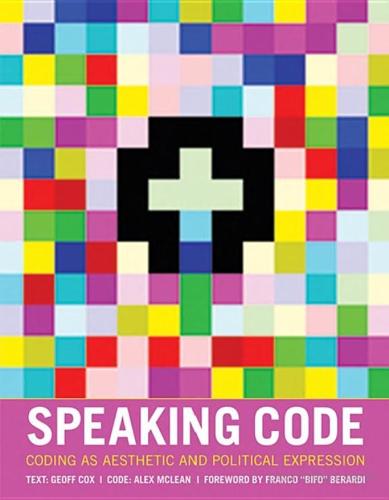
Speaking Code: Coding as Aesthetic and Political Expression
by
Geoff Cox
and
Alex McLean
Published 9 Nov 2012
This attention to publicness has implications also for the connection to property regimes and the ways that social technologies (especially popular platforms like Twitter and Facebook) tend to encourage ever more voices to be heard but only with restricted registers and effects. The concern is to consider some of the mainstream implementations of social software, to register the conditions under which this is done and the language employed to do so, and to examine the consequences in terms of the production of social relations and subjectivities. Through their reliance on proprietary logic, these developments seem to legislate against a plurality of voices that have unique attributes, which Arendt considers to be necessary for politics.
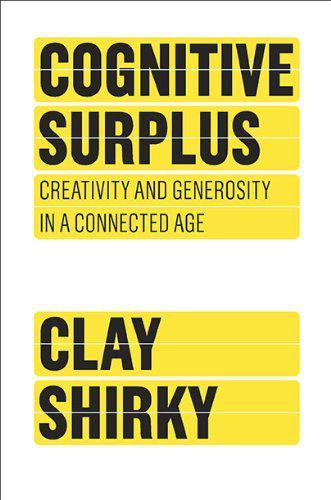
Cognitive Surplus: Creativity and Generosity in a Connected Age
by
Clay Shirky
Published 9 Jun 2010
Similarly, YouTube was only one of many video-sharing services in 2005, when it was used to share the popular music video “Lazy Sunday.” Whatever YouTube’s technical advantages over its competitors, it became synonymous with video sharing in part because of its lucky break in being the service used to host that video. That input to its success was user-driven and accidental rather than technological and planned. With social software, there are no foolproof recipes for success. (I speak from bitter experience, having participated in the creation of both successful and failed social media.) And yet we’ve learned some things about human interaction in the last few decades. The trick for creating new social media is to use those lessons to weight the odds in your favor, rather than as a set of instructions that guarantees success.

Effective Programming: More Than Writing Code
by
Jeff Atwood
Published 3 Jul 2012
I’ve always associated hellbanning with the Something Awful Forums. Per this amazing MetaFilter discussion, it turns out the roots of hellbanning go much deeper — all the way back to an early Telnet BBS system called Citadel, where the “problem user bit” was introduced around 1986. Like so many other things in social software, it keeps getting reinvented over and over again by clueless software developers who believe they’re the first programmer smart enough to figure out how people work. It’s supported in most popular forum and blog software, as documented in the Drupal Cave module. (There is one additional form of hellbanning that I feel compelled to mention because it is particularly cruel – when hellbanned users can see only themselves and other hellbanned users.
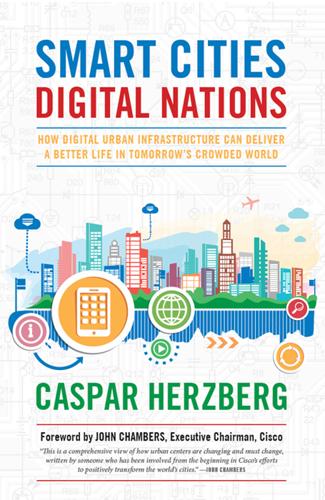
Smart Cities, Digital Nations
by
Caspar Herzberg
Published 13 Apr 2017
To be sure, citizens ideally can have oversight of the process, but planning citywide service platforms is complicated enough with a relatively limited circle of stakeholders. Townsend’s Smart Cities points out that “computing is no longer solely in the hands of big companies and governments. The raw material and the means of producing a smart city—smartphones, social software, open-source hardware, and cheap bandwidth—are widely democratized and inexpensive. Combining and recombining them in endless variations is cheap, easy, and fun.”5 This is true, but the work of ripping out existing infrastructure to lay down new cables and sensors, or envisioning a brand-new system, is neither cheap nor easy.

The Filter Bubble: What the Internet Is Hiding From You
by
Eli Pariser
Published 11 May 2011
Bret Taylor, Facebook’s platform lead, announced that users were sharing 25 billion items a month. Google, once the undisputed leader in the push for relevance, seemed worried about the rival a few miles down the road. The two giants are now in hand-to-hand combat: Facebook poaches key executives from Google; Google’s hard at work constructing social software like Facebook. But it’s not totally obvious why the two new-media monoliths should be at war. Google, after all, is built around answering questions; Facebook’s core mission is to help people connect with their friends. But both businesses’ bottom lines depend on the same thing: targeted, highly relevant advertising.

Four Battlegrounds
by
Paul Scharre
Published 18 Jan 2023
Chinese surveillance technology has been sold to at least eighty countries, according to Professor Sheena Greitens. These include many countries without sufficient checks and balances to protect citizens from government abuses. Even more troubling is China’s export of its laws and policies, the social “software” that enables the spread of China’s evolving model of techno-authoritarianism. (Country data from Sheena Chestnut Greitens. Map created by Melody Cook / Center for a New American Security.) Chinese firms have been aggressively selling their surveillance technology worldwide. In Malaysia, the Chinese firm Yitu has sold facial recognition bodycams to police.
…
Zimbabwe’s government, whose officials attended Chinese seminars, has pushed for a sweeping cybersecurity law that would strengthen surveillance and clamp down on internet freedoms. While the global spread of Chinese technology helps China gain access to new datasets as well as inroads for spying abroad, it is the social “software” of laws and policies that help China export its evolving model of high-tech authoritarianism. The proliferation of Chinese-style state surveillance is due to a number of factors. First among these is the desire of Chinese companies to make money and the international demand for surveillance networks.

Exponential Organizations: Why New Organizations Are Ten Times Better, Faster, and Cheaper Than Yours (And What to Do About It)
by
Salim Ismail
and
Yuri van Geest
Published 17 Oct 2014
Looked at through the lens of collaboration, a good question to ask is: Which advanced social technologies within GitHub can corporations implement in a controlled manner? More on the topic of collaboration: VentureBeat reports that more than 80 percent of Fortune 500 companies have deployed social software such as Yammer. However, according to Altimeter Group’s Charlene Li and Brian Solis, only 34 percent of 700 executives and social strategists surveyed felt their social efforts had an effect on business outcomes. Similarly, Computing magazine recently surveyed one hundred senior IT professionals and found the following: 68 percent said their organization is using some sort of collaboration.

Live Work Work Work Die: A Journey Into the Savage Heart of Silicon Valley
by
Corey Pein
Published 23 Apr 2018
* * * The Summit was as much a strategy session as it was a business seminar. Sometimes the political subtext became the text. The bold tech-empowered future would require an “update” to “our leadership structures,” as one Summit speaker put it. “The Constitution needs to be updated,” he said. “It’s the software that runs our society.” The next social software update would certainly crush all sorts of workers, as Rob Nail made clear when he spoke once more about robots and the automation of all labor. “It’s not going to be just blue-collar labor that’s replaced—or enhanced,” he said. Managers would also have robot replacements, he went on. This warning was echoed by SU past president and in-house ethicist Neil Jacobstein, a wry veteran of the revolving-door establishment who previously worked as a consultant for NASA, the Pentagon, and large contractors like Boeing.

The Rise of the Network Society
by
Manuel Castells
Published 31 Aug 1996
With the prospects of expanding infrastructure and declining prices of communication, it is not a prediction but an observation to say that on-line communities are fast developing not as a virtual world, but as a real virtuality integrated with other forms of interaction in an increasingly hybridized everyday life. A new generation of social software programs have made possible the explosion of interactive computer and video games, today a multibillion-dollar global industry. In its first day of release in September 2007, Sony’s Halo 3 earned $170 million, more than the weekend gross of any Hollywood film to date. The largest on-line game community, World of Warcraft (WOW), which accounts for just over half of the Massively Multiplayer Online Game (MMOG) industry, reached over 10 million active members (over half of which reside in the Asian continent) in 2008.
…
The growing interest of corporate media for Internet-based forms of communication recognizes the significance of the rise of a new form of societal communication, the one I have conceptualized as mass self-communication. It is mass communication because it reaches a potentially global audience through p2p networks and Internet connection. It is multimodal, as the digitization of content and advanced social software, often based on open source programs that can be downloaded for free, allows the reformatting of almost any content in almost any form, increasingly distributed via wireless networks. It also is self-generated in content, self-directed in emission, and self-selected in reception by many who communicate with many.

The Sharing Economy: The End of Employment and the Rise of Crowd-Based Capitalism
by
Arun Sundararajan
Published 12 May 2016
Some Challenges and Opportunities In many ways, this new generation of decentralized peer-to-peer technologies mirrors the P2P vision of Michel Bauwens that we discussed in chapter 1, and promises to create immense economic value over the coming decades. As the venture capitalist Chris Dixon wrote on his blog in 2014, Bitcoin makes activities like international microfinance, markets for computing capacity, incentivized social software, and other micropayments possible—not because we haven’t considered the value of these before, but because the transaction costs were too high.16 There are signs that traditional businesses will embrace many of the new capabilities of decentralized peer-to-peer technologies, much like Facebook actively uses BitTorrent within its privately owned server farms.
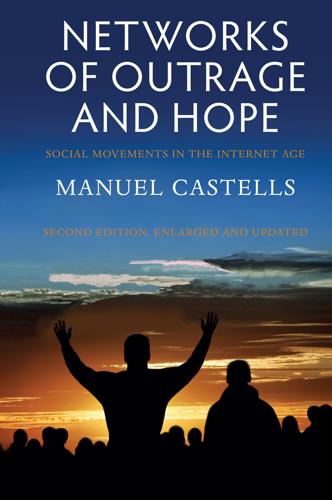
Networks of Outrage and Hope: Social Movements in the Internet Age
by
Manuel Castells
Published 19 Aug 2012
In continuity with this emphasis on autonomy building, the deepest social transformation of the Internet came in the first decade of the twenty-first century, from the shift from individual and corporate interaction on the Internet (the use of email, for instance), to the autonomous construction of social networks controlled and guided by their users. It came from improvements in broadband, and in social software and from the rise of a wide range of distribution systems feeding the Internet networks. Furthermore, wireless communication connects devices, data, people, organizations, everything, with the cloud emerging as the repository of widespread social networking, as a web of communication laid over everything and everybody.
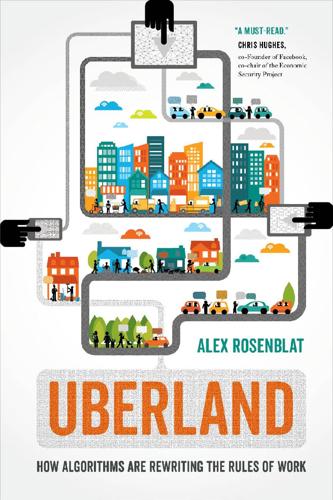
Uberland: How Algorithms Are Rewriting the Rules of Work
by
Alex Rosenblat
Published 22 Oct 2018
Instead, they frame these jobs as a form of social reciprocity—users are simply sharing their homes, cars, tools, skills, or time with other users on the platform. This logic comes from the technology culture at large. As an article of faith, Facebook holds that all 2 billion of its users are a “community.” Social software, like Wikipedia, fosters collaborative environments across communities of users who can contribute equitably to a common goal.52 (Although this is the idea behind collaborative, open-source software projects, there are many examples where this vision of equity doesn’t hold true. Women’s edits to Wikipedia pages, for example, are rejected or reverted more often than men’s edits.

Britain Etc
by
Mark Easton
Published 1 Mar 2012
Fine, The Political Economy of Diet, Health and Food Policy (Routledge, 1998) W is for www 1. R. Kraut, M. Patterson, V. Lundmark, et al., ‘Internet paradox: a social technology that reduces social involvement and psychological well-being?’ American Psychological Association, 53 (1998) 2. W. Davies, You Don’t Know Me, but . . . Social Capital and Social Software (The Work Foundation, 2003), wwwtheworkfoundation.com 3. A. Morris, ‘E-literacy and the Grey Digital Divide’, Journal of Information Literacy, 1 (2007) N. Nie and L. Erbring, Internet and Society (Stanford University, 2000) H. Rheingold, The Virtual Community: Homesteading on the Electronic Frontier (Addison Wesley, 1993) 5.

Is the Internet Changing the Way You Think?: The Net's Impact on Our Minds and Future
by
John Brockman
Published 18 Jan 2011
I think there’s a better way to detect absences, one that bypasses ad hoc search by creating a public place where knowledge comes into focus. We could benefit immensely from a medium that is as good at representing factual controversies as Wikipedia is at representing factual consensus. What I mean by this is a social software system and community much like Wikipedia—perhaps an organic offshoot—that would operate to draw forth and present what is, roughly speaking, the best evidence on each side of a factual controversy. To function well, it would require a core community that shares many of the Wikipedia norms but would invite advocates to present a far-from-neutral point of view.

The Constitution of Knowledge: A Defense of Truth
by
Jonathan Rauch
Published 21 Jun 2021
Although Smith did not invent markets, he notated the code which enabled a tribal primate, wired for personal relationships in small, usually related groups, to cooperate impersonally across unbounded networks of strangers, and to do so without any central authority organizing markets and issuing commands. Economic liberalism—market cooperation—is a species-transforming piece of social software, one which enables humans to function far above our designed capacity. Political liberalism grapples with another version of the cooperation problem: can we make rules which channel self-interest, ambition, and bias to benefit society as a whole? Can we provide social stability without squelching social dynamism, and without submitting to a Hobbesian authority?
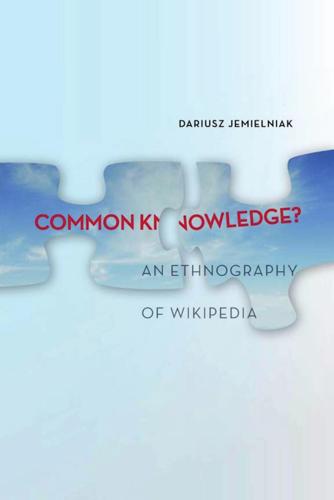
Common Knowledge?: An Ethnography of Wikipedia
by
Dariusz Jemielniak
Published 13 May 2014
This online encyclopedia community has been able to generate about 16,500 articles, of which fewer than 200 are expert approved (even though some featured articles from Wikipedia were used as “seed capital”), over its six years of existence so far (“Welcome,” 2013), which does not give hope for creating anything even remotely close to what an encyclopedia should be in the foreseeable future. Apparently, the costs of credentialing and identifying experts in open collaboration exceed the possible benefits (O’Neil, 2010). The social software of Wikipedia makes vandalizing an article more time-consuming than restoring its acceptable version (Lih, 2004), since it dramatically reduces costs of protection against graffiti attacks (Ciffolilli, 2003). Also, as shown in the previous chapter, understanding bureaucratic rules and their cryptic abbreviations leads to status in a community.

Machines of Loving Grace: The Quest for Common Ground Between Humans and Robots
by
John Markoff
Published 24 Aug 2015
He discovered Burning Man, the annual weeklong gathering in the Nevada desert that attracted tens of thousands of the Valley’s digerati. When Gruber’s sabbatical year ended he was ready to build a new company. He knew Reid Hoffman, who had by then started LinkedIn, the business networking company. Because of his experience at Intraspect, Gruber had good insights into “social software.” The two men had a long series of conversations about Gruber joining the start-up, which was on track to become one of Silicon Valley’s early social networking success stories. Gruber wanted to focus on design issues and Hoffman was looking for a new CTO, but in the end the LinkedIn board vetoed the idea because the company was on the verge of a large investment round.

Designing Interfaces
by
Jenifer Tidwell
Published 15 Dec 2010
Each time someone uses an application, or any digital product, he carries on a conversation with the machine. It may be literal, as with a command line or phone menu, or tacit, like the “conversation” an artist has with her paints and canvas—the give and take between the craftsperson and the thing being built. With social software, it may even be a conversation by proxy. Whatever the case, the user interface mediates that conversation, helping users achieve whatever ends they had in mind. As the user interface designer, then, you get to script that conversation, or at least define its terms. And if you’re going to script a conversation, you should understand the human’s side as well as possible.

Blockchain Revolution: How the Technology Behind Bitcoin Is Changing Money, Business, and the World
by
Don Tapscott
and
Alex Tapscott
Published 9 May 2016
“I’m excited about the idea that you have a fully distributed mechanism for accounting, for actions, and for digital resources across anything; whether it’s currency, whether it’s social relations and exchange, or whether its an organization.”38 Today, commercial collaboration tools are beginning to change the nature of knowledge work and management inside organizations.39 Products like Jive, IBM Connections, Salesforce Chatter, Cisco Quad, Microsoft Yammer, Google Apps for Work, and Facebook at Work are being used to improve performance and foster innovation. Social software will become a vital tool for transforming virtually every part of business operations, from product development to human resources, marketing, customer service, and sales—in a sense the new operating system for the twenty-first-century organization. But there are clear limitations to today’s suites of tools, and the blockchain takes these technologies to the next level.

Lean Analytics: Use Data to Build a Better Startup Faster
by
Alistair Croll
and
Benjamin Yoskovitz
Published 1 Mar 2013
Joel kick-started Buffer because of a pain he was experiencing: the difficulty of posting great content he was finding regularly to Twitter. Solutions already existed for scheduling tweets, but nothing as simple and easy to use as what Joel was looking for, so he joined forces with Tom and Leo, and they built Buffer. Unlike most companies in the social software space, they decided to charge customers right off the bat. Joel had two assumptions: that the problem was painful enough for people, and that they would pay. Taking a very Lean approach, the trio built and launched the app and had their first paying customers in seven weeks.[75] For Buffer, their One Metric That Matters was revenue.

The Hype Machine: How Social Media Disrupts Our Elections, Our Economy, and Our Health--And How We Must Adapt
by
Sinan Aral
Published 14 Sep 2020
Do we really want a world dominated by popularity? (Such worlds tip toward madness and away from wisdom, as we learned.) Or would we rather promote those who uplift our spirit, enhance our knowledge, and deepen our emotional stability? The “time well spent” movement is admirable, but design alone cannot achieve its goals. Yes, we need social software designed to support the values we want to promote, but we need to advocate for those values through our own collective behavior as well. The #deletefacebook movement is an expression of that desire. Even without real alternatives, society is pushing back on the Hype Machine’s current designs.

Makers at Work: Folks Reinventing the World One Object or Idea at a Time
by
Steven Osborn
Published 17 Sep 2013
Then we see more businesses popping up because they see that it’s possible to get funding and to grow, and to make a lot of great stuff on Kickstarter, for example. The Internet is helping that happen too. They’re here also, by the way. Osborn: What’s that? Stern: Kickstarter is in New York too. Osborn: Well, I guess I can’t say all cool software start-ups are on the West Coast anymore. Stern: Social software start-ups. Osborn: It’s an odd environment when you go to the Silicon Valley, and you’re in a coffee shop and everybody’s having a conversation about his or her company’s valuation. Stern: I know. Osborn: It sounds like there’s a private mailing list maybe for you and some friends who have kept in touch and do new maker things, but what if I’m just average Joe and I don’t know anything about e-textiles or maybe I know just enough to know that I want to get started or build some project, but I’m stuck?

Android Cookbook
by
Ian F. Darwin
Published 9 Apr 2012
Application Type There are currently two choices: Applications or Games. Category The allowable list of categories varies depending on application type. The currently available categories for applications are Communications, Demo, Entertainment, Finance, Lifestyle, Multimedia, News & Weather, Productivity, Reference, Shopping, Social, Software Libraries, Tools, and Travel. For games, the currently available categories include Arcade & Action, Brain & Puzzle, Cards & Casino, and Casual. Price This may be “Free” or a fixed price. Refer to the agreement you agreed to earlier to see what percentage you actually get to keep. Geography You can limit where your application is available, or choose to make it available everywhere.

Facebook: The Inside Story
by
Steven Levy
Published 25 Feb 2020
He looked fourteen, and totally owned it, wearing flip-flops and long basketball shorts. His business card read, “I’m CEO . . . bitch.” But it was Thefacebook’s story, at least as Parker explained it, that blew Pincus’s mind. Something like 80 percent of its users signed on every day. This was unheard of, and a dramatic contrast to the metrics at Pincus’s own social software, tribe.net, where a single-digit percentage of members logged on daily. He’s created the Cocktail Party! Pincus thought, albeit one where the guests weren’t old enough to drink yet. Hoffman was eager to meet Zuckerberg, too, but was sensitive to criticism he’d gotten after his Friendster investment.
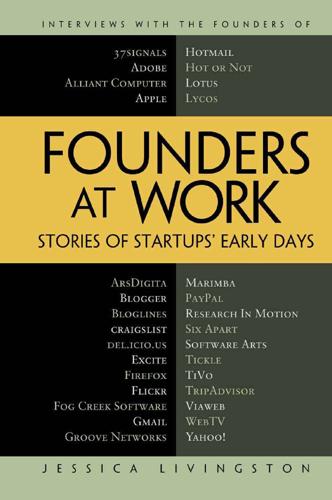
Founders at Work: Stories of Startups' Early Days
by
Jessica Livingston
Published 14 Aug 2008
But what’s interesting is that it has a market and you can trade things with other people in the game. The little area that I cornered the market on was trading JubJub hats. My sister became completely absorbed in it, and we thought, “Wow, there’s something interesting here.” Both of us have backgrounds in web design and development, and I have a focus on social software. Before Ludicorp, I worked on or participated in a bunch of online communities including the WELL, Electric Minds, the Netscape online communities, and various sites I’d started on my own. At Interval Research, I worked on a collaborative animation game, which was a cousin to the Game Neverending idea.